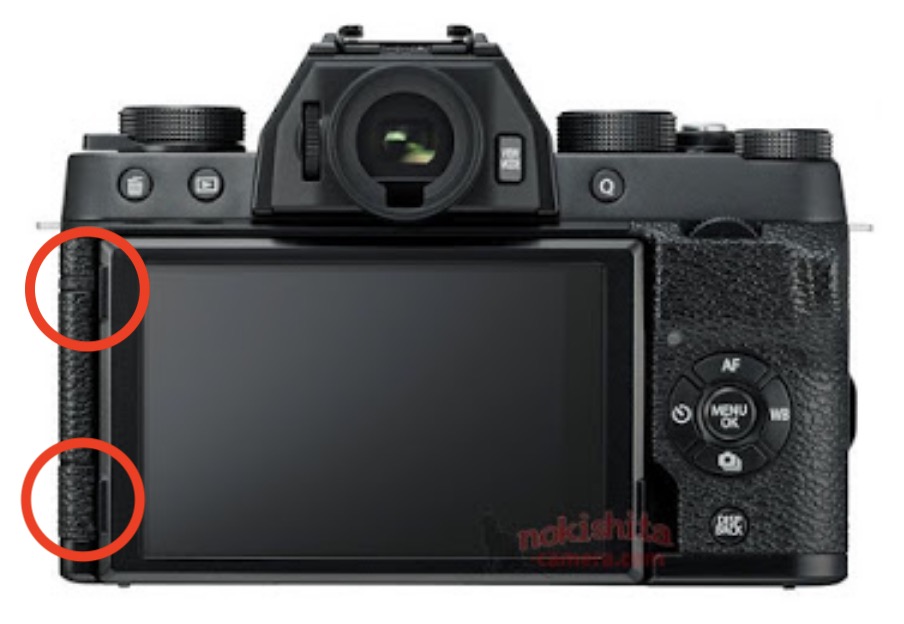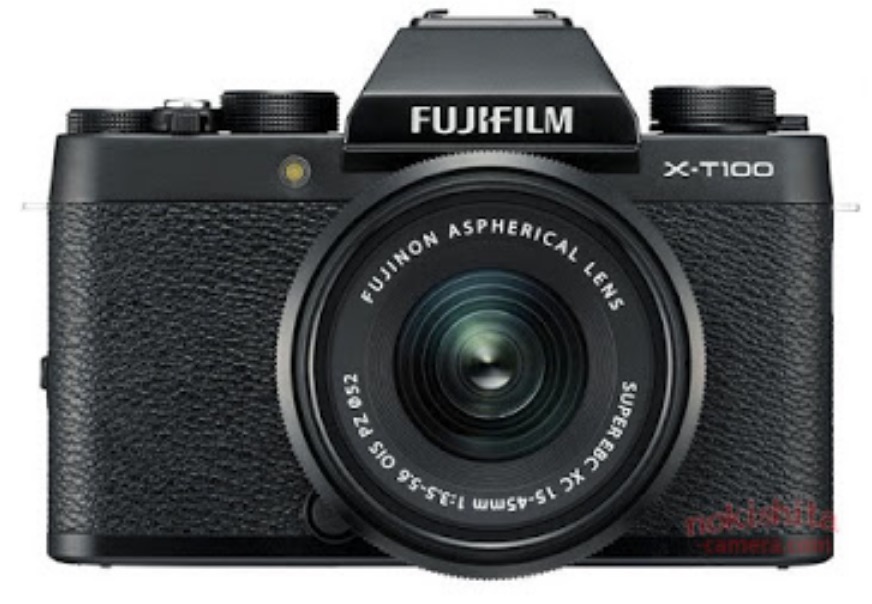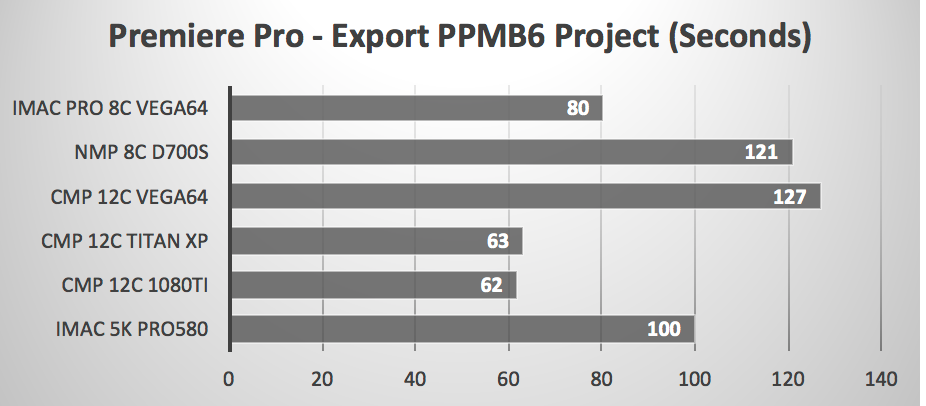-
Posts
1,600 -
Joined
-
Last visited
Content Type
Profiles
Forums
Articles
Everything posted by Don Kotlos
-
Are you sure the A9 doing full sensor readout for 1080p? I thought the only Sony camera that do that are A7s*. A7rII had a great FF 1080p mode, really close to A7s*. Real shame the A7rIII does not have as good HD in normal rates, but at least it does HD HFR much better. If I had the choice between full sensor readout 1080p and 4K with the same bitrate I would most often choose the 1080p. For example the 1080p 200mbps intra from GH5/s is just perfect.
-

so the iMac Pro is not really professional after all?
Don Kotlos replied to no_connection's topic in Cameras
-
Two media slots? I can't even find one! But I agree an SSD slot or an extension that supports it would be nice. A mini XLR would be a great addition as well as a relatively uncompressed codec. The price seems high only because the new pocket 4K is priced so low...
-

Sony A7 III first impressions - what is going on with metering in video?
Don Kotlos replied to Andrew Reid's topic in Cameras
I don't see the button to enable the ProRes RAW -
Yeah a card with your Vimeo link would be better.
-
I think for 1080p vlogging the Canon M50 will be a much better choice. I consider the X-T100 a cheap Fuji camera for photography. I bet the X-T100 has the same 1080p quality as the X-A5 which is not great. Low detail full of aliasing artifacts:
-
The advantages of X-Trans are 1. Less aliasing without an AA filter 2. Better light collection efficiency. The disadvantages on the other hand are 1. Less color information 2. X-trans artifacts on certain patterns 3. Processing inefficient Having used a lot of Fuji cameras over the years, I would prefer if Fuji moved to Bayer. The AA is not that important with the >24MP resolution and the low light advantage of the X-Trans is maybe 1/2 a stop. For photography, I find the gain of color information far more important. For example I found the output from X100 to have much better colors and I know a lot of people the feel the same. I agree with Chris that the only reason that Fuji keeps on using the X-trans is for marketing purposes. There are a lot of people out there that believe that X-Trans is what makes Fuji colors nice, but in reality it is what holds the Fuji colors back. Not to mention how much it would improve their video performance in general.
-

Sony A7 III first impressions - what is going on with metering in video?
Don Kotlos replied to Andrew Reid's topic in Cameras
The remote app functionality is very basic unfortunately. I wish camera companies at least released a remote api functionality so other developers can do their magic. They would have nothing to loose right? That being said, I find the remote app to work great for basic monitoring. I can shoot with the camera and other people look at the image on a wirelessly connected tablet. One time I used it as a binocular replacement. Since the magnification in focus assist is really good now, I used the 12X magnification with the 55mm/f1.8 (FoV similar to a 650mm lens!) to display the actors up close on a tablet/phone so you can get a better view of their expressions. The result was really excellent. That brings me to the following question: Does anyone know if the live feed when in stills mode can be recorded through HDMI and what the resolution is? -
It doesn't look great for video usage: "The performance in video is not so great in term of AF AF noisy AF often hunting AF motor noise even in manual focus" https://sonyalpha.blog/2018/05/22/tokina-firin-20mm-f2-af/
-
There are some machine vision C-mount lenses that do resolve 4K but they are fairly expensive and certainly not worth buying for the M50. That being said, even if a lens does not resolve the 4K resolution, it can still create a very nice filmic image since you won't notice any aliasing artifacts and there is going to be a gradual decrease in amplitude of the higher spatial frequencies.
-
I really like the design. It is the first front facing LCD implementation that I actually like because it still allows tilt. But as the X-E3 I don't like why they don't use their best EVF in them.
-
I don't find it that great. First of all because especially cinematographers need to know and adjust the DoF, FoV and perspective. That means then need to know the equivalent focal length for all different cameras with different sensor sizes. If you had a m4/3 camera with the 25mm @f/1.4 and you wanted to match the image with a FF camera then you would have to use a 50mm @f/2.8. You then use ISO/NDs/Lights to control exposure. Second is because he was ad nauseam saying you cannot get the same look from different sensor sizes no matter what, even when people provided him with proof. He then he made a youtube video twisting the argument and saying exposure is everything. Lets not go back to that bitterness. Hopefully this is the last thread about it but lets say it one more time: Perspective only depends on the distance from the lens. You can then adjust the focal length/aperture for a given sensor size to get a specific FoV and DoF.
-
Haha, not only you can mount in there, but you can hide it as well as have a wind breaker for it...
-
I don't disagree with the fact that smaller sensors require far better glass in order to get similar performance to larger sensors. But the differences that are visible in that test are mostly due to perspective and not distortion, which is really a problem when shooting architecture (both stills & video). In any case, I believe the m4/3 still has its place. Small cameras such as the E-M5ii or the PenF coupled with tiny lenses such as the 17/1.8 and 45/1.8 are a joy to carry around your neck and shoot all day long. Something that even the A7rIII & the 35/2.8 cannot really achieve. If on the other hand you are after image quality or shallow DoF, then instead of start buying expensive & large glass for m4/3, my opinion is that a FF camera will offer a much better solution for the same price/size/weight. Thats why I wish Olympus & Panasonic really put an effort to keep their systems small enough but pleasurable to shoot with. For example I would really love a PenF or a GX9 with a state of the art HUGE EVF that I would want to use instead of using subpar components like the GX9 did in order to save costs ( I would also remove at least half the buttons from these cameras ).
-
In the test that you posted, the differences that you see in perspective are because of the different distances of the camera to the face. The focal length just changes the FoV. So in order to keep the same DoF you have to move the camera at different distances, which gives rise to different perspective. If you changed the sensor size in order to match the FoV, you wouldn't have to move the camera and thus the perspective would not be different. For example were you to have a camera with a very high resolution so you can crop, you could use a wide angle lens from far away and it could give you the same compression as the 300mm.
-

Sony A7 III first impressions - what is going on with metering in video?
Don Kotlos replied to Andrew Reid's topic in Cameras
Sorry I didn't mean to say there is no other way. Its just that I don't find using the shutter dial very useful for video. -

Sony A7 III first impressions - what is going on with metering in video?
Don Kotlos replied to Andrew Reid's topic in Cameras
I feel quite the opposite. While i like the manual dedicated dials for photography, for video it is a pain. The shutter dial especially is not that useful since you have to use two separate dials to get my most used speed 1/50. I shoot mostly in manual mode with autoISO and I frequently adjust the shutter speed between 1/25 and 1/100. And for the ISO dial you rarely need to select one specific ISO value. It is mostly adjusting for exposure or setting it to auto. For video I much prefer the dumb assignable dials. Easier to quickly set a value with just one finger. I have set the back control wheel to change the ISO which also has an auto position. Moreover, I wish every company implements the smooth auto ISO of the Sonys. The exposure changes as smooth as the variable electronic ND of the FS5. -

Sony A7 III first impressions - what is going on with metering in video?
Don Kotlos replied to Andrew Reid's topic in Cameras
At least with the A7rII/III any changes of the C settings are kept while sleep/power cycle. It only revers to the saved C values when the mode dial is rotated. -
Companies would love it if everyone believed this , but unfortunately (or fortunately for our wallet) it is not the case. I have built and bought too many computers over the years. Currently I am using a MacPro from 2010 with 12 cores, 64gb ram, an M.2 NVMe boot drive and a Titan X GPU and I can tell you this is no way obsolete: That was of course when Apple made computers for professionals . But with windows, which have even more choices, you can easily update any part of the system. Even with different generation CPUs you just need to upgrade the CPU+motherboard. RAM technology does not change that fast and easily lasts for ~10years. Future-proofing is very important when building a computer. Unless someone has either too much cash to waste or no idea how to build a computer that is.
-
The 8700K is currently the best value/performance CPU for photo/video editing. I would strongly suggest you get a full ATX sized or microATX motherboard if you don't mind the increased size of the case. The miniATX should only be used if reduced size is absolutely necessary! Having a larger motherboard allows you to add more GPUs and more RAM! The extra space in the case will help with cooling (and noise!) and give you room to add RAID arrays of spinning drives in case you need the extra space. I would also bump up the PSU to ~650W so it can easily support more GPUs + extra spinning drives in the future.
-
Isn't the C500 still close to $5K? Add the recorder and it gets higher. At that price level I would spend a bit more and go the C200 route to gain the internal raw + PDAF. FS700/R remains the cheapest camera for Prores RAW at ~$1.5-2.5K, but again you need that huge and expensive recorder to go with it. Here is the part two of Caleb's ProresRAW:
-
Yep, perspective is only affected by the distance of the objects to the lens. The focal length & sensor size do not affect perspective in any way. A 25mm on a m4/3 sensor with an aperture of f/1.4 will have the same perspective and DoF as the 50mm on a FF sensor with an aperture of f/2.8. The other aspects of the image like distortion or busyness of the bokeh depend on the design of the lens and not the focal length/aperture/sensor size.
-
I used the 25m T/0.95 from slrmagic extensively and enjoyed it a lot. The GH5 still lags behind though compared to full frame. You need the GH5s in order to much the low light performance for the same DoF (two stops slower on the FF) at least in video. For photos there is still at least a 2 stop difference between m4/3 and FF and will always be the case for sensors with similar technology and a 4 times area difference. The advantage of the FF lenses is that you can get very good AF with very shallow DoF which can also work great with video. The eye-AF is just an amazing thing to have if you like shooting faces with very shallow DoF. Another important point is that while these lenses are OK for video, the quality is not great for stills. You have to go up to the newer Olympus f/1.2 PRO line to get really good results, and then you are actually paying a lot of money for a m4/3 lens and still lag behind in the sensor department.
-

Sony A7 III first impressions - what is going on with metering in video?
Don Kotlos replied to Andrew Reid's topic in Cameras
Forced AF with an AF-ON button does not work well in video mode. Gives too much hunting. So my practice is to have a dedicated button that toggles between AF/MF. When I want to focus I engage the toggle and to set the focus point you can touch the point on the touchscreen. Then turn off if you don't want to change focus any more. Woks reliably for me. -
The video bellow compares the two modes. That guy is confused though between the recording bitrate of S&Q which for 120p is ~60mbps and the final bitrate of the slomo file which ends up at ~12mbps (60/5). If someone intends to grade the footage then I would advise them to use the normal 120p setting from the movie menu, but for quick turnaround videos the S&Q should be good enough. https://www.youtube.com/watch?v=YfYD9CPkgdk







